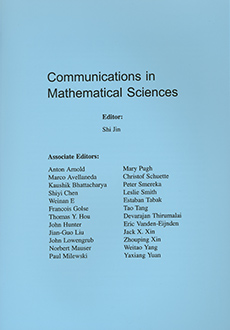Abstract
High frequency solutions to partial differential equations (PDEs) are notoriously difficult to simulate numerically due to the large number of grid points required to resolve the wave oscillations. In applications, one often must rely on approximate solution methods to describe the wave field in this regime. Gaussian beams are asymptotically valid high frequency solutions concen- trated on a single curve through the domain. We show that one can form integral superpositions of such Gaussian beams to generate more general high frequency solutions to PDEs.
As a particular example, we look at high frequency solutions to the constant coefficient wave equation and construct Gaussian beam solutions with Taylor expansions of several orders. Since this PDE can be solved via a Fourier transform, we use the Fourier transform solution to gauge the error of the constructed Gaussian beam superposition solutions. Furthermore, we look at an example for which the solution exhibits a cusp caustic and investigate the order of magnitude of the wave amplitude as a function of frequency at the tip of the cusp. We show that the observed behavior is in agreement with the predictions of Maslov theory.
Citation
N. M. Tanushev. "Superpositions and higher order Gaussian beams." Commun. Math. Sci. 6 (2) 449 - 475, June 2008.
Information





